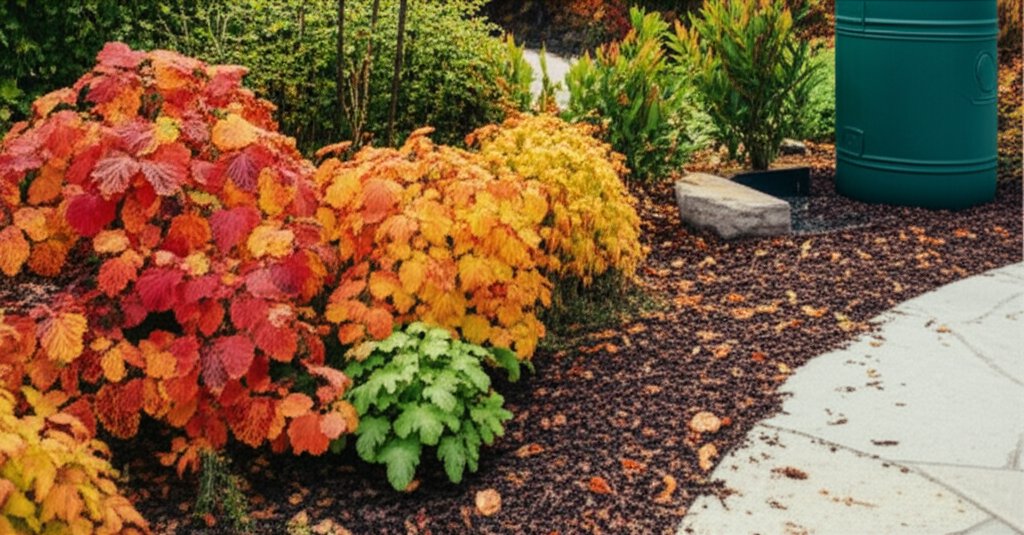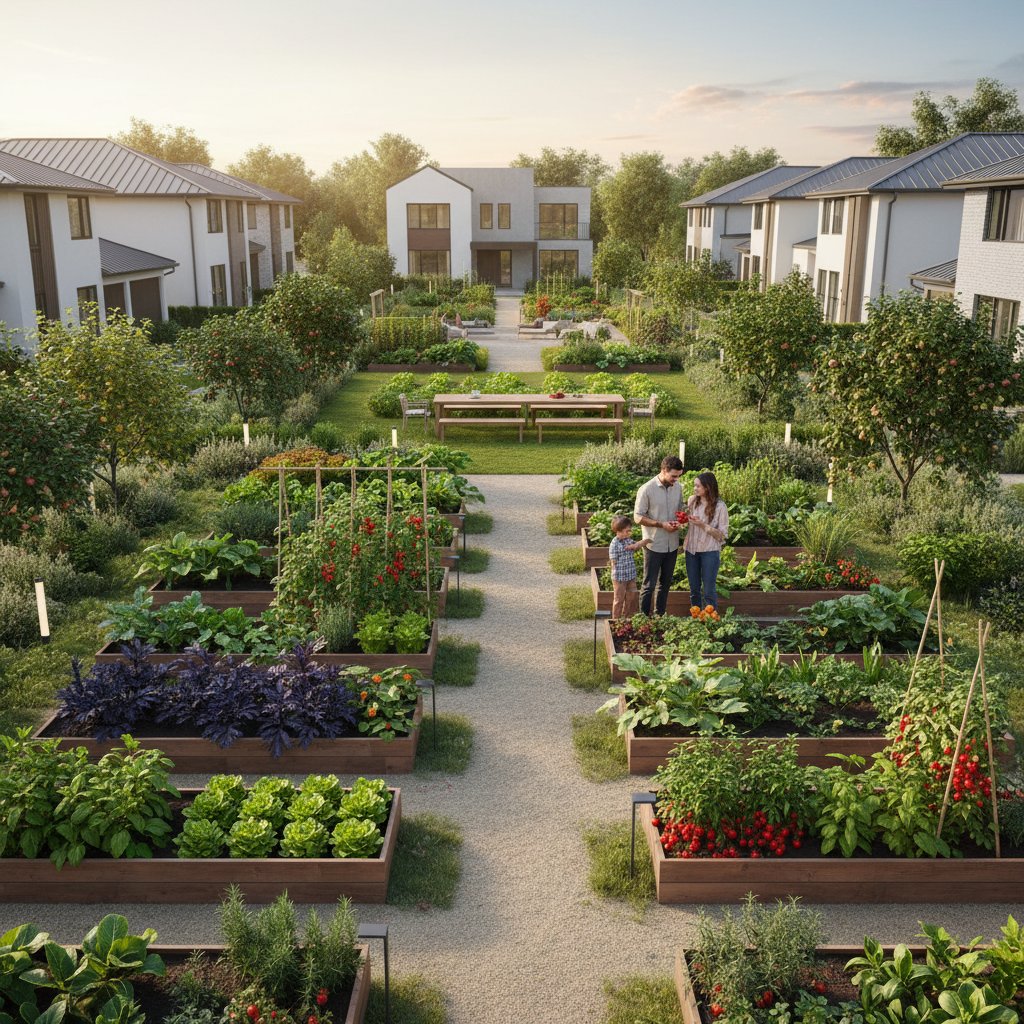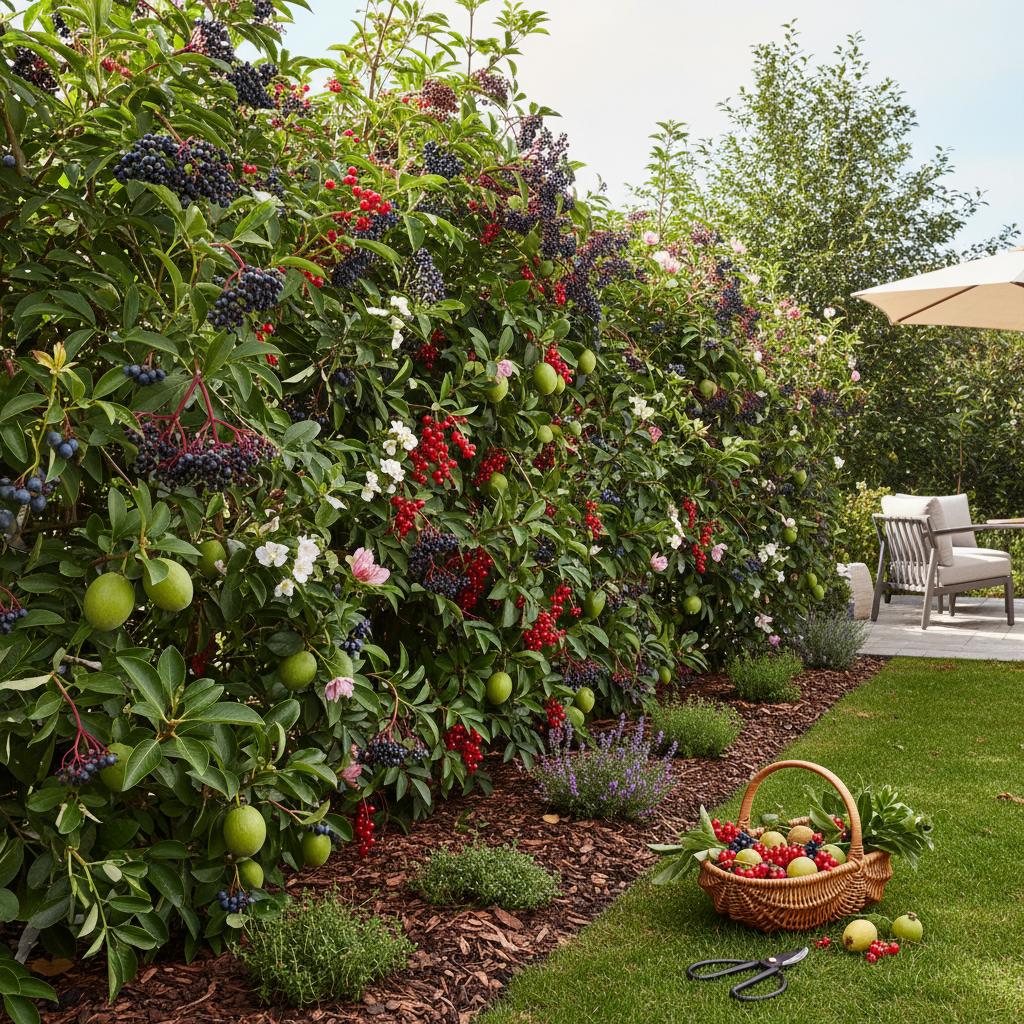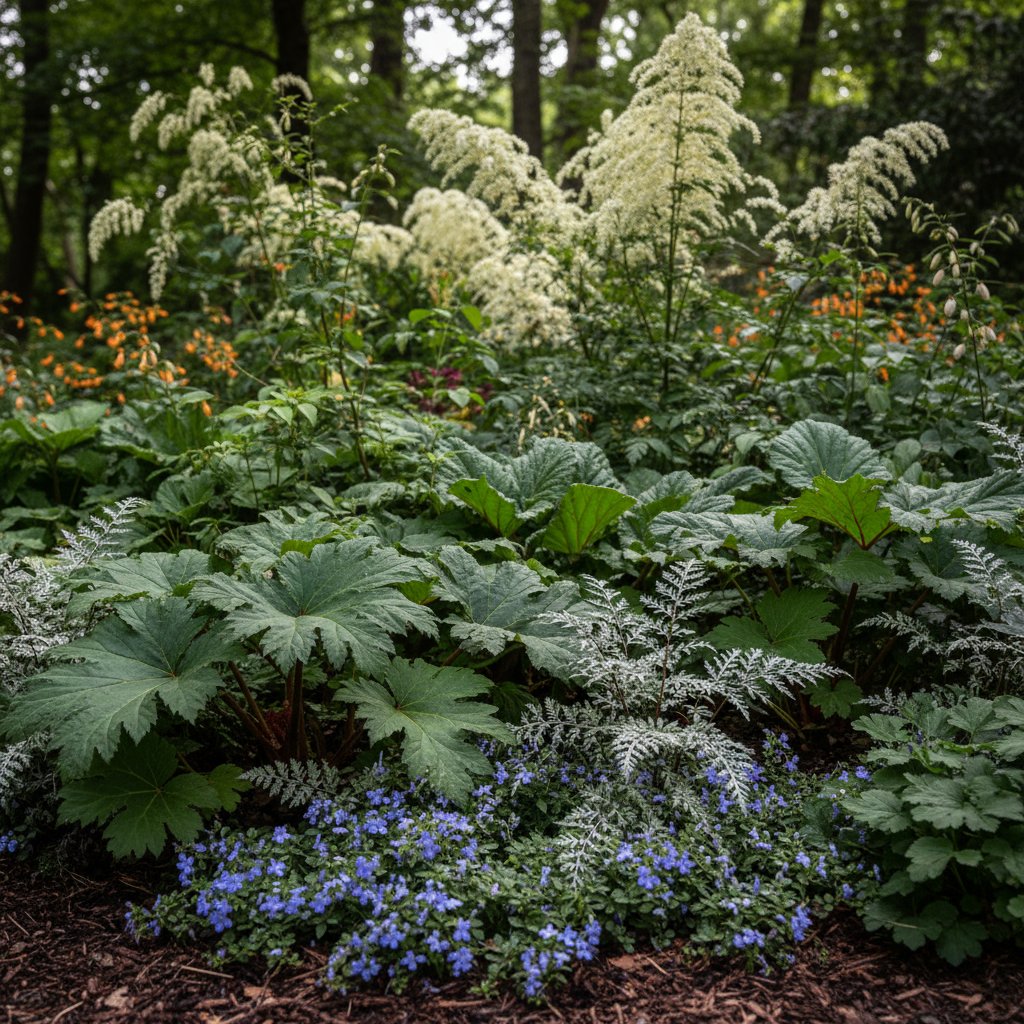Eco-Friendly Autumn Landscaping Tips for Homeowners
I often think of autumn as the season that reveals the quiet character of a garden. The flowers of summer begin to fade, yet the earth still hums with activity as leaves fall, soil shifts, and plants prepare for rest. This is the time when a yard can look tired or, with thoughtful choices, take on a deeper beauty that feels consistent with the rhythm of nature. It is also one of the best opportunities for homeowners to lean into sustainable practices that care for both the land and the people who live on it.
The shift from summer to autumn is more than a change in color. It is a transition that asks us to slow down, to look carefully at what is thriving and what needs adjustment. In this pause, we can choose methods that respect the cycles of the garden while reducing waste, conserving water, and supporting wildlife. Eco-friendly landscaping is not about strict rules. It is about listening to the land and making small, mindful changes that, over time, create harmony.
The Beauty of Working With Nature
When I walk through a neighborhood in autumn, I notice two kinds of yards. Some are stripped clean, with every leaf bagged and hauled away. Others are softer, with layers of golden leaves left under trees, bird activity among seed heads, and a sense of quiet abundance. The difference is not just aesthetic. It reflects a choice about whether to work against or with nature.
Working with nature means letting organic matter return to the soil, planting what fits the climate, and inviting creatures that keep the ecosystem balanced. It often results in less maintenance, healthier plants, and a richer landscape experience.
Why Autumn is Perfect for Eco-Friendly Landscaping
Autumn is a natural season of preparation. Plants slow their growth, soil remains warm, and the weather is often gentler. These conditions are ideal for planting trees, shrubs, and perennials since roots can establish before winter. It is also the best time to reflect on what the garden offered during the year and to make adjustments that will carry into spring.
Eco-friendly choices in autumn also tend to have long-lasting effects. A leaf mulched into the soil now becomes nutrients for years to come. A tree planted in cooler weather can grow strong roots that support decades of shade. Small decisions in this season echo for a long time.
Smarter Leaf Practices
One of the most common autumn tasks is dealing with fallen leaves. Many homeowners feel pressure to rake and bag them all, yet this habit removes valuable organic matter from the yard. Leaves are not waste. They are a natural mulch, soil conditioner, and habitat.
Alternatives to Bagging
- Mulch with a mower: Shredding leaves with a mulching mower allows them to break down quickly and feed the lawn.
- Use them as garden mulch: A thick layer of leaves around shrubs, trees, and perennials protects roots, conserves moisture, and prevents weeds.
- Create a leaf compost pile: Collected leaves can be piled in a corner, left to decompose, and later used as rich compost for flower beds.
- Leave them in natural areas: If you have wooded edges or unused corners, let the leaves remain. They provide shelter for insects and food for birds.
A yard does not need to be spotless to be beautiful. A softer, slightly wild look often feels more natural in autumn and supports the quiet processes happening in the soil.
Choosing Native Plants for Autumn Interest
Many homeowners focus on spring blooms, yet autumn can be just as colorful when the right plants are chosen. Native plants, those that naturally belong to your region, are especially valuable. They require less water, resist local pests, and provide food for migrating birds and pollinators.
Examples of Native Plants with Autumn Appeal
- Goldenrod: Bright yellow flowers that support late-season pollinators.
- Asters: Purple or blue blooms that bring color when other flowers fade.
- Switchgrass: Tall grasses that add movement and texture in the wind.
- Serviceberry: Trees with striking fall color and berries for birds.
- Sumac: Fiery red foliage and clusters of fruit that persist into winter.
When choosing plants, think of layers. Tall trees provide canopy, shrubs offer structure, and perennials fill in the ground. This layering creates visual richness and a healthier ecosystem.
Water-Wise Landscaping
Autumn often brings cooler weather and occasional rain, yet water conservation remains important. Dry spells can happen at any time, and reducing unnecessary irrigation is both eco-friendly and cost-saving.
Tips for Smarter Water Use
- Install rain barrels: Collecting rainwater from gutters provides a free source for garden watering.
- Improve soil health: Adding compost and organic matter helps soil hold water longer.
- Mulch generously: Mulch reduces evaporation and keeps roots moist.
- Group plants by water needs: Place thirsty plants together and drought-tolerant ones separately to avoid overwatering.
- Check irrigation systems: Make sure sprinklers are not watering sidewalks or driveways.
Water-wise landscaping is not about sacrifice. It is about making small adjustments that allow plants to thrive naturally. A healthy soil base and thoughtful plant choices often reduce the need for constant watering.
Supporting Wildlife Through the Season
Autumn is a critical time for birds, insects, and small mammals. Many are migrating, storing food, or finding shelter for the cold months. The way a homeowner manages the yard can either help or hinder them.
Simple Ways to Support Wildlife
- Leave seed heads: Instead of cutting down perennials, let them stand. Birds feed on the seeds, and insects find shelter in the stems.
- Provide water: A shallow birdbath with fresh water is valuable when natural sources freeze.
- Plant berry-producing shrubs: Species like viburnum, winterberry, or chokeberry provide food well into the cold months.
- Leave brush piles: A small pile of branches or logs creates habitat for beneficial insects and small animals.
Supporting wildlife does not mean giving up control of your yard. It means allowing space for natural interactions that keep the ecosystem balanced.
Reducing Chemical Use
Autumn often tempts homeowners to apply fertilizers or chemicals to prepare lawns for winter. While some treatments may offer short-term benefits, they can damage soil health, harm pollinators, and pollute water sources.
Healthier Alternatives
- Compost tea or organic fertilizers: These feed soil life instead of forcing quick growth.
- Overseeding with native grasses: Strengthens lawns naturally, reducing weeds.
- Aeration: Improves root growth without chemicals by allowing air and water into compacted soil.
- Hand weeding: Slower but avoids the risks of herbicides.
A healthy lawn or garden does not need heavy chemical use. Strong soil, diverse plantings, and balanced ecosystems often prevent many common problems.
The Role of Hardscaping in an Eco-Friendly Yard
It is easy to think of hardscaping, like patios or pathways, as separate from eco-friendly design. Yet the materials and layout chosen can influence sustainability.
Ideas for Greener Hardscaping
- Permeable pavers: These allow rainwater to soak into the ground instead of running off.
- Reclaimed materials: Using salvaged stone, wood, or brick reduces demand for new resources.
- Natural stone pathways: These age beautifully and blend with plantings.
- Smaller paved areas: Reducing the size of patios or driveways allows more room for soil and plants to absorb water.
Hardscaping should feel like a part of the landscape, not something imposed on it. When materials match the natural tones of the yard and allow for water flow, they create harmony.
Composting in Autumn
Autumn is compost season at its best. With leaves, garden cuttings, and kitchen scraps, the raw material is abundant. Composting turns what might be waste into a resource that enriches soil for years.
Tips for Successful Composting
- Balance greens and browns: Greens are fruit and vegetable scraps, while browns are leaves and branches. A balance creates efficient breakdown.
- Keep it moist but not soggy: Too much water slows the process, while too little stalls it.
- Turn the pile occasionally: Aerating the pile speeds decomposition and prevents odor.
- Be patient: Composting is slow, but the result is soil that supports any planting project.
Composting encourages a full-circle approach to gardening. What grows in one season returns to the earth to nurture the next.
Seasonal Lawn Care with Sustainability in Mind
For many homeowners, the lawn is a central part of the yard. Autumn is an important time to prepare it for the cooler months without falling into wasteful habits.
Eco-Friendly Lawn Tips
- Mow less frequently: Taller grass shades the soil and reduces water loss.
- Leave clippings: Grass clippings feed the soil as they decompose.
- Overseed with clover: Clover is drought-tolerant, fixes nitrogen naturally, and reduces the need for fertilizers.
- Avoid heavy raking: Small amounts of leaf mulch improve soil health.
A lawn can be both green and sustainable. The key is to let it function as part of the ecosystem instead of trying to keep it in unnatural perfection.
Creating a Sense of Autumn Atmosphere
Eco-friendly choices are not just practical. They also build a certain feeling in the yard. Autumn landscapes have the potential to feel deeply comforting and reflective.
Consider how the following elements influence atmosphere:
- Color: Plant trees and shrubs that change to red, orange, or gold.
- Texture: Mix grasses, seed heads, and bark to create depth.
- Sound: Allow dried grasses to rustle in the wind or leaves to crunch underfoot.
- Movement: Birds feeding or butterflies passing through bring life.
- Light: Use soft outdoor lighting to highlight the glow of foliage at dusk.
When atmosphere is considered alongside sustainability, the result is a yard that feels alive and welcoming.
Building Habits That Last
One of the challenges of eco-friendly landscaping is consistency. It is easy to try something once, but lasting benefits come from repeating the practices year after year.
Helpful Habits
- Set aside a composting area and keep adding to it.
- Mulch leaves every autumn instead of bagging them.
- Plant one or two new natives each season to gradually build diversity.
- Check irrigation regularly to avoid waste.
- Observe wildlife and adjust plantings to support what you see.
Small, repeated habits add up. Over time, a yard becomes more than a collection of plants. It becomes a living system that supports itself.
Living With Your Design
Eco-friendly landscaping is not a one-time project. It is a relationship with the land that deepens through observation and patience. Each autumn teaches new lessons about what thrives, what struggles, and how the space feels as the seasons turn.
A yard that embraces sustainability also tends to invite people outside. The sound of leaves underfoot, the sight of birds feeding, or the warmth of a fire pit surrounded by natural plantings creates a sense of belonging. These are not just aesthetic pleasures. They remind us that our homes extend beyond walls into the living landscape.
When you make choices that conserve water, build soil, and support wildlife, you are not only protecting the environment. You are also creating a place that feels whole. Autumn is the perfect time to lean into this approach, to make small changes that benefit both your garden and your daily life.
Making It Happen
If you are considering eco-friendly changes this autumn, start small. Choose one or two practices that feel manageable. Perhaps mulch leaves instead of bagging them, or plant a cluster of native asters. Notice how these choices affect your yard, and let that guide your next step.
Over time, these small actions add layers of richness to your landscape. Your soil becomes healthier, your plants grow stronger, and your yard becomes a welcoming space for wildlife and people alike. Sustainability is not about perfection. It is about steady attention and thoughtful choices that match the rhythms of the natural world.
The season of autumn invites us to slow down, to notice, and to prepare. By choosing eco-friendly landscaping practices now, you set the stage for a garden that continues to thrive through winter and beyond. Each thoughtful decision is both a gift to the land and to the people who call it home.



